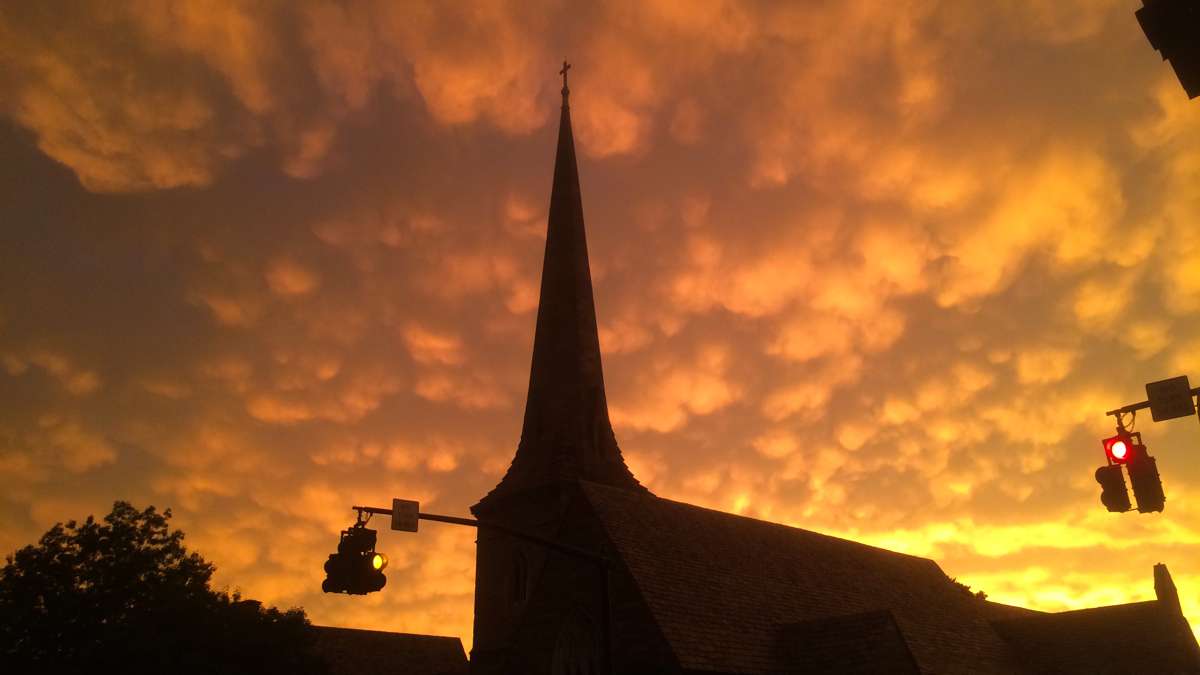Was it a twister? The forensics of tornadoes
Listen
Following destructive storms that some thought might have touched off tornadoes, the sky brightens over Trinity Episcopal Church in Moorestown, New Jersey, Tuesday evening. (Emma Lee/WHYY)
Tuesday night’s thunderstorms uprooted trees, tore down power lines and flipped a car onto its roof at a South Jersey mall. Many wondered if a twister had touched down. Or was it just strong, straight line wind?
With weather, fingering the right perpetrator has a lot in common with old-fashioned crime scene investigation. Radar, for instance, is an important tool, but can’t provide definitive proof of what happened at the ground.
“It’s not actually seeing tornadoes,” said Valerie Meola, a meteorologist with the National Weather Service forecast office in Mount Holly, New Jersey. “It’s just sampling the levels above the surface.”
For the best evidence, investigators must visit the site and observe the destruction first hand.
“You’ll look for some signs of rotation,” said Jared Klein, another meteorologist with the National Weather Service. “Maybe the trees that fell in the area aren’t all pointing at the same direction.”
Other clues come from photos or videos of funnel clouds.
“We do talk to eyewitnesses if there are any,” added Meola.
The verdict
Based on such storm forensics, surveyors decide if the storm qualifies, and, if so, assign a value on the Enhanced Fujita scale, an updated version of the original rating system developed in the 1970s. The score ranges from zero to five and is based on the amount of damage, from which wind speed is inferred.
In an existential quirk, the system means not all tornadoes, such as those touching down in rural places without many trees, are reported.
For property owners, though, whether a storm is classified as a tornado isn’t likely to matter.
“In the end, it’s excessive wind damage and it’s just as devastating whether you have a tornado or not,” said Meola.
In the case of Tuesday’s bad weather, an examination of various spots in Gloucester County on Wednesday afternoon revealed there was no tornado. The culprit instead was a macroburst, a kind of downdraft, with gusts of 85 mph.
WHYY is your source for fact-based, in-depth journalism and information. As a nonprofit organization, we rely on financial support from readers like you. Please give today.

